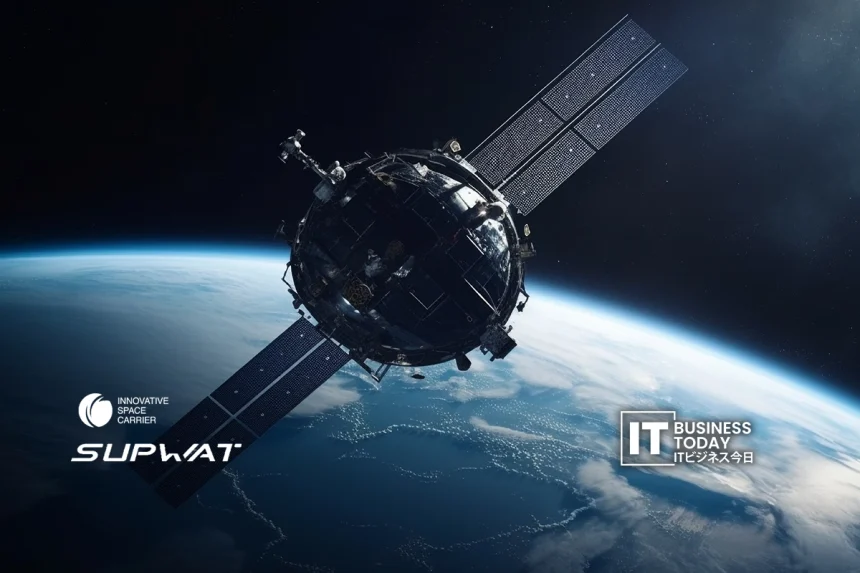SUPWAT Co., Ltd., which develops the DX platform “WALL” that optimizes the engineering chain of the manufacturing industry, has collaborated with Future Space Transportation Systems Co., Ltd., which aims to realize a passenger transportation system that enables high-frequency and large-scale space travel, with the aim of reducing the weight and strengthening rocket fuel tanks. In December 2024, we completed the development of a surrogate model that combines AI technology and structural analysis and a design optimization system using this model. In addition, as the second phase, we have also started the analysis and design of a new lightweight tank structure that prevents leaks using this model, so we would like to inform you of this as well.
ISC is a company that aims to realize a next-generation transportation system that enables space travel, with the vision of “A world where people and cargo can be delivered every day. This should be the norm in space too.” The company’s goal is to develop a rocket for launching artificial satellites by March 2028, and it has been selected for the Ministry of Education, Culture, Sports, Science and Technology’s SBIR Phase 3 project.
Rocket tanks are important components, and especially for rockets that use liquid fuel, the fuel and tanks account for the majority of the weight of the entire rocket, so in addition to safety, strict conditions are required for the tanks, such as lightweight, storage efficiency, pressure resistance, and strength. Since rockets use cryogenic fuels such as liquid hydrogen (-253°C), liquid oxygen (-183°C), and liquid methane (-160°C), the tanks must be able to withstand harsh cryogenic environments. However, in cryogenic environments, the materials used in the tanks behave in complex ways, making it difficult to predict their behavior using conventional tank development methods. In addition, when trying to reduce the weight of a tank, there is a trade-off between weight reduction and strength/rigidity, and safety is often compromised during the development process, which has been an issue. Therefore, in order to reduce the cost of space transportation, the two companies have decided to collaborate and begin developing a design optimization system using a surrogate model with the aim of developing a new cryogenic-compatible fuel tank for next-generation rockets that will use carbon fiber reinforced plastic (CFRP) as the main material for the fuel tank, thereby making the fuel tank lighter, stronger, and less expensive.
Also Read: Interstellar Technologies Secures $89M in Series F Round
In the first phase of this collaboration, we developed an AI model that predicts mechanical responses in tank design (such as peeling and breaking) and a design optimization system using this model, which was completed in December 2024. This model is a surrogate model that combines AI technology and structural analysis, and is an AI model that predicts the mechanical response of designs in cryogenic environments. By using a design optimization system equipped with this model, it is possible to simultaneously optimize multiple design requirements (weight reduction and safety, etc.), and it has been established as a practical design method compatible with the latest automated additive manufacturing (AFP) technology for the inner wall of the tank. In the second phase, we are using the design optimization system developed in the first phase to optimize the tank structure, particularly structural analysis to prevent leaks from the tank mouthpiece. In the future, based on the results of the analysis in the second phase, the two companies plan to expand the technology for practical use in rockets and work together to develop a new structure of fuel tank that is both lightweight and safe.
The newly developed design optimization system using the surrogate model is expected to find application in a wide range of cryogenic equipment and structural components in the aerospace industry, as well as in next-generation fuel (hydrogen, natural gas, etc.) tanks in the automotive industry, trucks, heavy machinery, construction machinery, and other HDV (Heavy Duty Vehicle) applications, including cryogenic storage tanks in the plant industry.
Through collaboration with ISC, SUPWAT will develop a new fuel tank structure that is both lightweight and safe, in order to reduce the cost of space transportation. In addition, in order to achieve its vision of “creating an era of intelligent manufacturing,” SUPWAT will work to contribute to technological innovation in the manufacturing industry through the application of this technology to a wide range of industries and fields.
SOURCE: PRTimes







